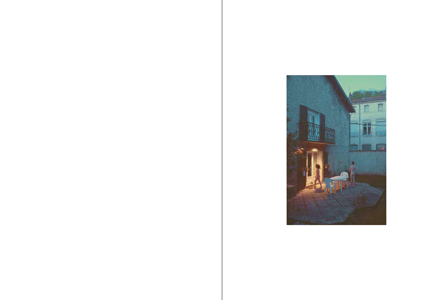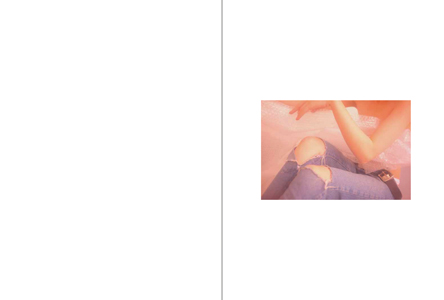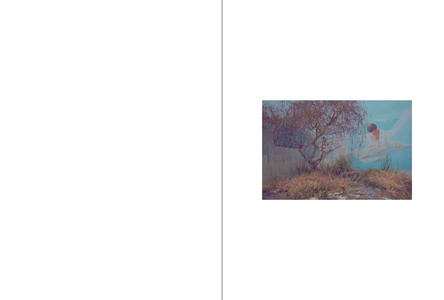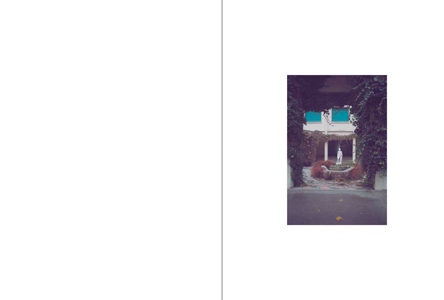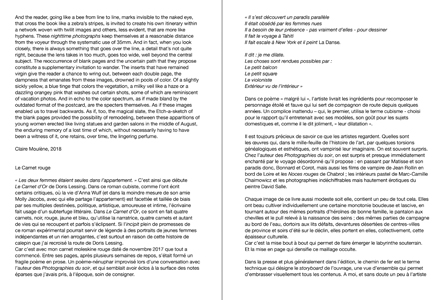Les photographies d’extérieur de Julien Carreyn explorent notre pays, ses difficultés à négocier son prestige essentiellement lié au passé, et son esthétique obéissant aux critères et goûts que l’on suppose être celui des classes moyennes. Il ne s’agit ni d’une approche critique ni d’un témoignage mais plutôt d’une fuite ; un désir d’éloignement spatio-temporel dont le point de départ serait une zone péri-urbaine située au bord du rien. Dans cette exploration, tel parking à demi-vide ou telle enseigne de salon de coiffure deviennent, soumis à certains choix esthétiques de cadrage et de distance, une composition à la manière de Morandi (substituant des Renault Mégane et Citroën Picasso aux bouteilles, cônes et entonnoirs) ou un curieux mélange de sémiologie et nostalgie. Certaines images sont imprimées en noir et blanc sur des objets, peut-être des presse-papiers en plexiglass de format carte postale, d’autres subissent un traitement dans lequel certaines couleurs sont voilées, atténuées ou supprimées (généralement le vert et le jaune), soulignant l’approche de l’esthète sans renier la séduction étrange advenue du charme discret de la fadeur. Après ces interventions, ce qui reste de proximité dans le corpus est encore écarté au profit de la loi du genre, ici le nu, dont l’apparition ponctuelle génère l’artifice et déplace l’ensemble des images dans le domaine de la mise en scène et la fiction pure.
Julien Carreyn’s exterior photographs explore France and the trouble it has negotiating its prestige, which is essentially connected to the past, and its aesthetic, which obeys criteria and tastes that we might suppose to be those of the middle classes. This is neither a critical approach nor a testimonial. It is more like an escape: a desire for spatio-temporal distance whose starting point might be a peri-urban area located on the edge of nothing. In this exploration, a half-empty car park or a hairdressing salon sign, submitted to certain aesthetic choices of framing and distance, become a Morandi-style composition (replacing the bottles, cones and funnels with Renault Méganes and Citroën Picassos) or a curious mixture of semiology and nostalgia. Certain images are printed in black and white on objects, perhaps postcard-size Perspex paperweights, while others undergo a process by which certain colours are masked, softened or removed (generally green and yellow), underlining the approach of the aesthete without denying the strange seductiveness that arises from the discreet charm of blandness. After these interventions, what proximity is left in the corpus in once again swept aside in favour of the law of the genre, in this case the nude, whose occasional appearance generates artifice and shifts all the images into the domain of staging and pure fiction.


